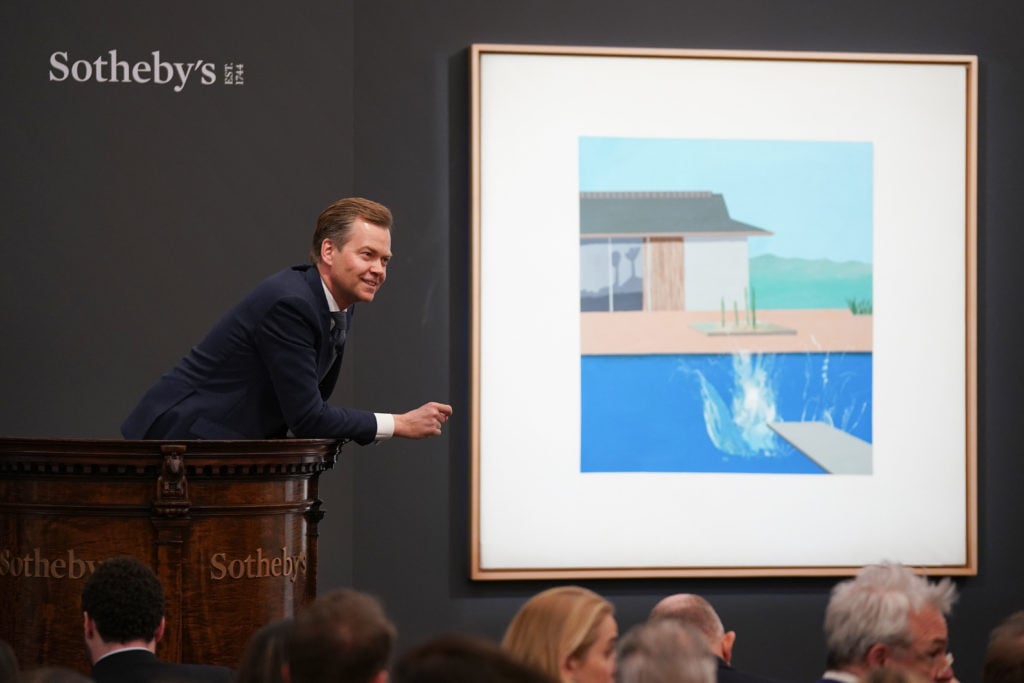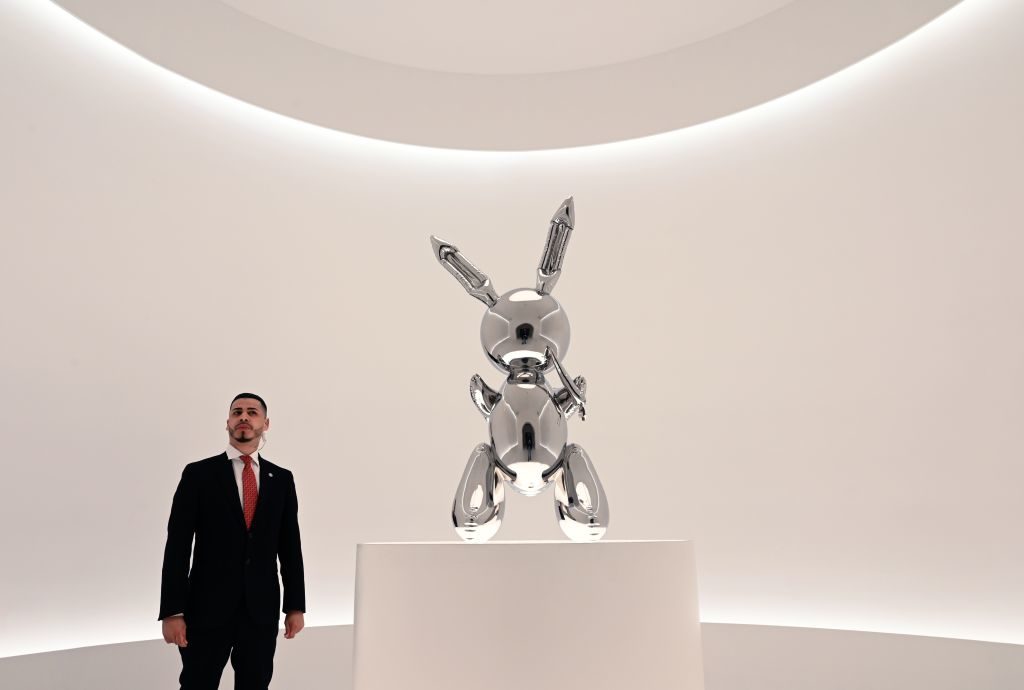Opinion
5 Bold Predictions From Art-Industry Veteran Simon de Pury for How the Auction Business Will Change in the Post-COVID Era
The auctioneer shares his thoughts on the future of auctions.

The auctioneer shares his thoughts on the future of auctions.

Simon de Pury

The pandemic we are currently experiencing is a wake-up call to humanity as a whole and to each of us individually. Now, as with any wake-up call, we have the choice to act on it or to ignore it.
What will the world look like post-coronavirus? Will we still need art? Will it change the practice of art itself? How will it affect museums? How will it change auctions and art fairs? What will the consequences be for fundraising for charities and cultural institutions? What can each of us, as participants in the art world, try to do differently?
I have my views on what the answers to some of the above questions might be. But here, I will focus specifically on the future of auctions.
Auctions are still the most democratic and fair solution for both the seller and the buyer. As a collector, you can, provided you are the highest bidder, buy the work that you actually want. There is none of the nonsense of dealers deciding if you are worthy of a certain piece. It should be a basic human right that if you pay for an artwork, you should be free to resell it when and where you want to. As a successful auction buyer, your freedom to decide on the destiny of your purchase will not be hemmed in.
Auctions have existed forever and will continue to do so. But they may look different in the future. Here are five predictions about how the auction industry will change.

Auctioneer Oliver Barker brought the hammer down on David Hockney’s The Splash at Sotheby’s. (Photo by Michael Bowles/Getty Images for Sotheby’s)
The main evening sales at Christie’s, Sotheby’s, and Phillips are the bellwether of the art market. They are exciting events to attend, and the seats in the main auction room are a highly coveted commodity that you earn by being a regular bidder. The majority of the people in the auction room are dealers, gallerists, or art advisors. They, together with the personality of the auctioneer, create the electric atmosphere.
But in recent years, most of the real action in these sales has been generated by end buyers who bid from their homes, offices, or swimming pools. They would do so over the telephone to a staff member who would relay their bids to the room, or by sending bids online directly onto a screen visible to the auctioneer.
Does the fact that, for the time being, people will think twice before wishing to attend these evening sales in person cause a problem? It will not make auctions any less fascinating. They are like TV shows being watched by millions with a live audience in the studio to create the mood. The show itself doesn’t change.
As a soccer fan, I have witnessed several Champions League games played in front of empty stadiums—the players didn’t perform any less well without an audience. In other words, top auctions or top charity events will, thanks to ever-improving technology, make it possible to convey maximum excitement and atmospherics with or without physical attendance.
How much longer will owners of works valued at, say, more than $50 million be prepared to offer them at auction—even with a guarantee? When the art market contracted in June 1990 as a result of Japanese buying stopping almost overnight, it took several years for truly major works to be offered again at auction. The turnover at Sotheby’s and Christie’s dropped by nearly 60 percent, not due to a dip in prices, but a drop in the number of top works being offered.
In October and November 2008, at the height of the financial crisis, the turnover of the main auction houses also dropped sharply. But when the Pierre Bergé – Yves Saint Laurent auction went ahead anyway at Christie’s in March 2009, it became the most successful single-owner collection ever, and potential vendors were instantly filled with confidence. The market has not ceased to strengthen since.
If a sale of that caliber were to happen again, confidence would return to the market. But unless an owner is hard-pressed to sell a trophy work, they will not want to test the waters for quite some time now. They may, however, try to do so by private treaty sale. The private-sales departments of the main houses are essential for them to be profitable at all, and remain one place auction houses can continue to be very effective.

A security guard stands next to Jeff Koons’s Rabbit from the “Masterpieces From The Collection of S.I. Newhouse” sale at Christie’s New York. (Photo: TIMOTHY A. CLARY/AFP/Getty Images)
However, drastic staff reductions are now being implemented at these same businesses.
One of the reasons the duopoly of Christie’s and Sotheby’s has been consistently strong is because of their huge infrastructures. Having an army of specialists, marketeers, social connectors, and client liaisons in offices all over the world comforts the potential vendor. The feeling is that the auction house will reach parts of the market that nobody else can reach—to paraphrase an old Heineken advert, “it refreshes parts other beers can’t reach.”
This is the reason auction houses get away with raising their buyer’s premiums at regular intervals. But it also means that if you sell any artwork between $10,000 and $3 million, you pocket, at the least, 25 percent less than what the purchaser pays. These margins are substantial. If the main auction houses drastically slim down their infrastructures, will vendors still accept leaving so much money on the table for the auction houses?

Richard Prince, 3 Jokes Painted to Death or 3 Jokes Really Painted (1987), which will be included in Sotheby’s Contemporary Art Day Auction Online in May.
The art market is the only market that has managed to resist the technological revolution for so long. Several online auction houses have come and gone and, until recently, the in-house competition from auction houses’ brick-and-mortar colleagues made it impossible for online sales to grow significantly. Thanks to the lockdown era, the online auction world will grow more in these few months of 2020 than it has over the past ten years.
Sotheby’s has understood this, as their recent promotion of Edouard Benveniste to CDO (chief data officer) shows. He is the first person in the art world to be given that title. A potential positive outcome of the current crisis is that auction houses may cease producing the very beautiful and lavish catalogs, printed and distributed at great cost to themselves and at far greater cost to the environment.

An interior hallway of the ARCIS freeport in Harlem. Image courtesy of ARCIS ©2018.
The immediate problem the market faces is that art warehouses are in lockdown themselves. I have works stored in New York, London, and Geneva and am unable to have a single work moved from A to B.
The art-storage companies in Germany have remained open but didn’t have much business during the shutdown. Collectors may not be prepared to pay for a work without knowing when they can have it. Art warehouses may be amongst the first businesses to reopen when health guidelines begin to be loosened around the world.
I used to say, “While we don’t need art to live, I couldn’t imagine a life without it.” This has never felt more true. It is extraordinary to witness people on social media reenacting famous paintings, or memes linked to art and music. More than ever, it is art that lifts us up and gives us hope, comfort, and strength to make it through these challenging times.
Simon de Pury is the former chairman and chief auctioneer of Phillips de Pury & Company and now works as a private dealer, artistic director of Newlands House Gallery in Sussex, and a partner in the joint venture de Pury @ Asprey.